The 4000-year narrative of Vietnam is a well-worn story to the ordinary Việt. As soon as one steps into primary school, a familiar tale unfolds: Lạc Long Quân and Âu Cơ lay a sack of 100 eggs, which hatch into 100 imperial kings, the mythical ancestors of ancient Vietnam.
What follows is a linear timeline of land establishment and resistance: against the Chinese, the Mongols, the French, and the Americans. While this linear timeline provides a straightforward view of the national identity, much more is left to be told about the ethnic diversity in between.
When I listen to the whisper of a Chăm prayer or touch the soft silks woven by H’Mong artisans, I hear an older, subtler, but no less vital history. These civilizations are not remnants of a bygone era, but living cultures, shaping and shaped by the dynamic present of Vietnam.
Beyond the ruins - A Chăm Legacy
The Chăm people appear in the conscience of most Vietnamese, but rather as a distant civilization. Their distant yet glorious past is present in several corners of southern Vietnam, housing several Chăm temple ruins.
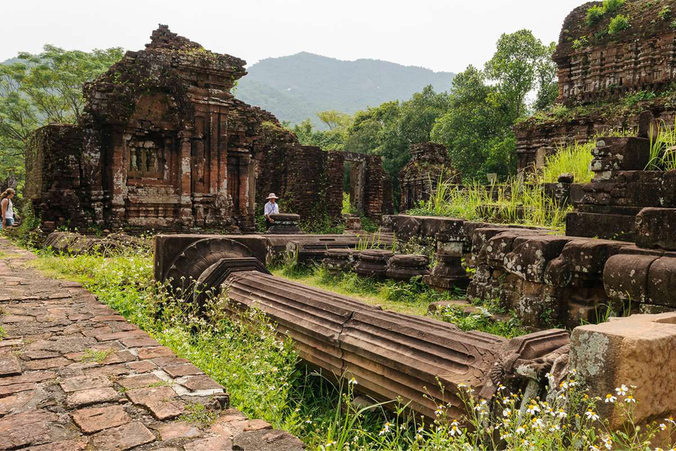
The Kinh and the Chăm started out on a parallel course of history. The Chăm partially inherited the iron-based Sa Huỳnh culture, while the Kinh in the north cultivated bronze-based Đông Sơn culture. The Chăm were sea-farers while the Việt thrived on agriculture.
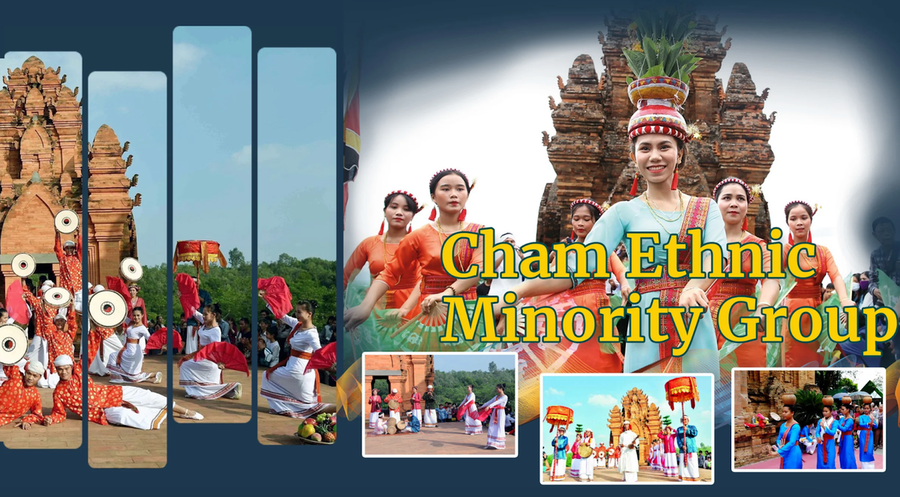
According to census data on 53 ethnic minorities as of 1 April 2019, the total population of Chăm ethnic people is 178,948, less than 0.2% of Vietnam’s total population. Despite this fraction, aspects of the Chăm culture stands as a response to several societal concerns today, some of which includes gender roles and spiritual pluralism.
Contrary to the Confucian norms dominating modern Vietnamese families, Chăm women traditionally take the initiative in their marriage. Couples reside in the wife’s house and children are born with their mother’s family name. This alternative gender structure challenges contemporary stereotypes framing women as housewives.
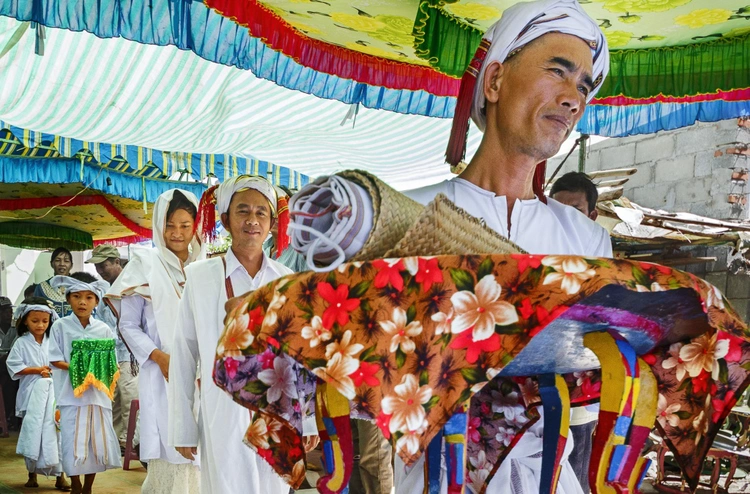
In matters of faith, Chăm religious life reflects a spiritual pluralism. While some Chăm follow Islam, others still practice a localized version of Hinduism blended with indigenous animist beliefs. Such pluralism resists easy categorization, pushing back the idea that religion must be monolithic.
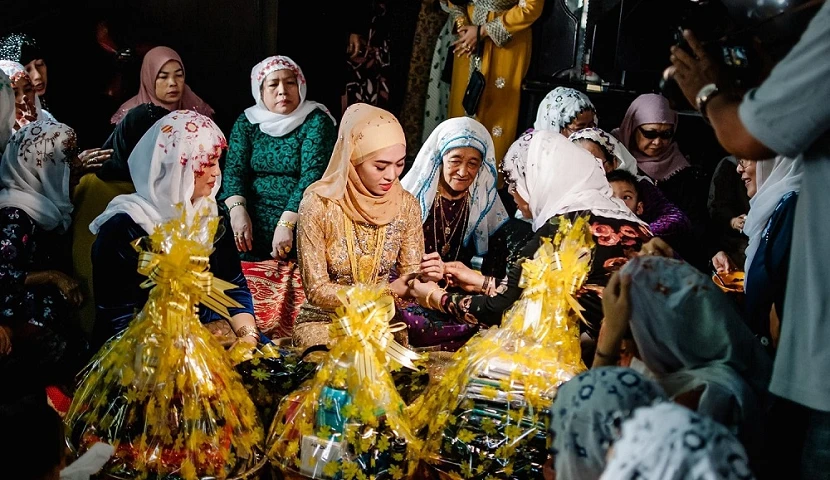
H’Mong Attire - A Vibrant Fashion Heritage
Through the literary lens of Tô Hoài, a grassroot of contemporary Vietnamese literature, scenes of H’Mông life unfolds: “In the Red Hmong villages, flower skirts have been laid out to dry on rocky outcrops, spreading their wings like vibrant butterflies…” In another excerpt, he added: “From the mountain ridge echoes a faint sound of flute, an invitation to hang out and date.” – Vợ chồng A Phủ (1), 1953
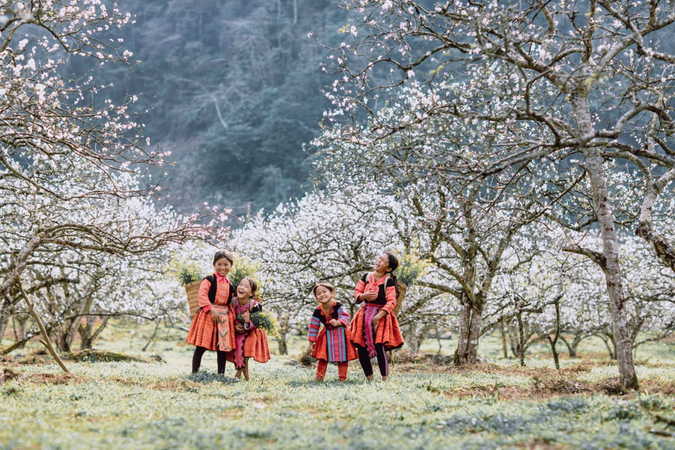
Believed to have migrated to Vietnam about 4000 years ago, Vietnamese H’Mông history is a rather oral one, with rare written documentations narrating their origin. Despite the lack of formal documentation, the Hmong have preserved a strong cultural identity through language, textiles, music, and rituals passed down across generations.
According to the 2019 Census on 53 ethnic minorities, the H’Mông population in Vietnam totals 1,393,547, spread across various subgroups such as Mông Trắng (White H’Mông), Mông Hoa (Flower H’Mông), Mông Ðỏ (Red H’Mông), Mông Ðen (Black H’Mông), Mông Xanh (Blue/Green H’Mông), and Na Miẻo.
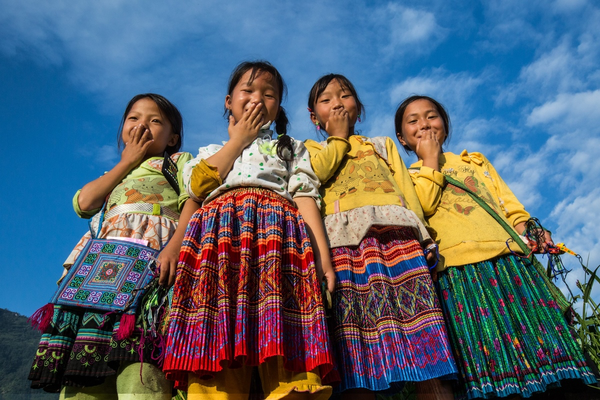
The H’Mông attire serves to mark their presence, from ancient times to contemporary artworks. In an age of urban minimalism and global fashion uniformity, the H’Mong skirt refuses to conform. Its swirling pleats, indigo-dyed fabrics, and intricate hand-embroidered patterns speak not of trends, but of ancestry, identity, and resistance.
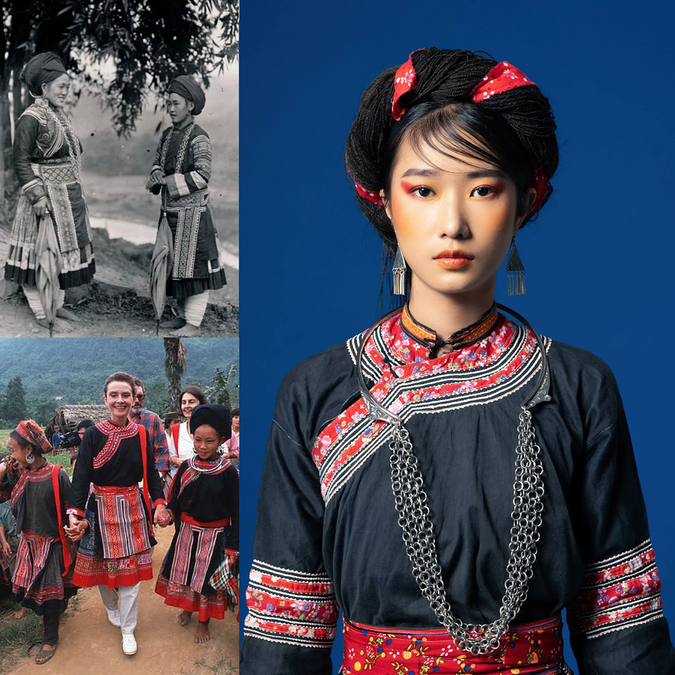
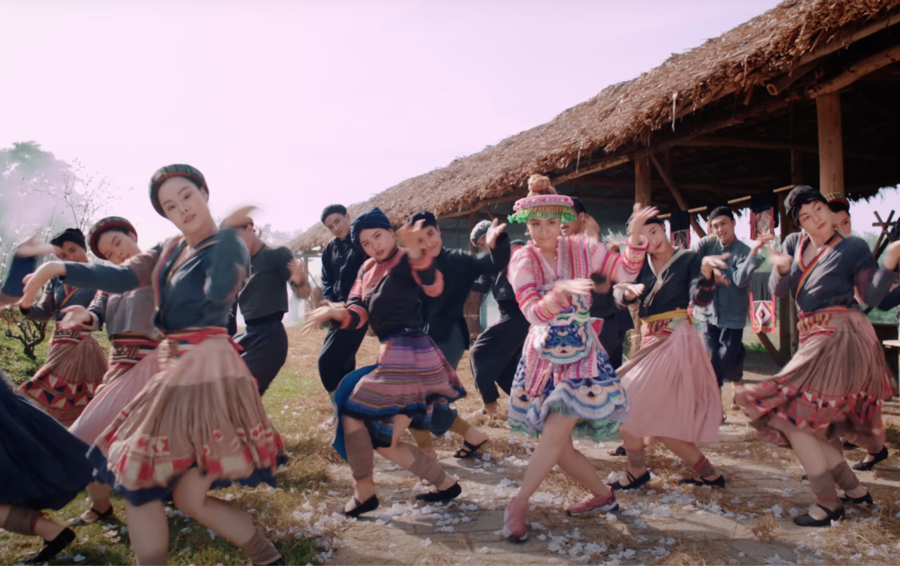
The Khmer and Theravāda Buddhism
From the 17th century onward, Vietnamese settlers moved southward in a process known as Nam Tiến (the "March to the South"). Over time, the Khmer in the Mekong Delta were gradually integrated into Vietnamese territory.
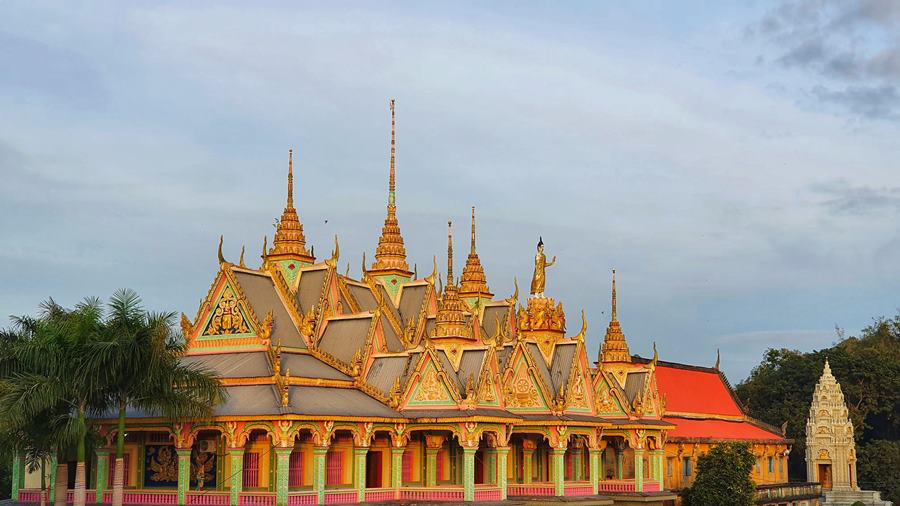
A dig into the Khmer language reveals some distinction compared to the Kinh language. The Khmer language belongs to the Mon-Khmer group within the Austroasiatic language family. While Vietnamese shares some Austroasiatic influences, especially in early vocabulary and structure, its core development stems from the Viet-Muong branch, which diverged from Mon-Khmer quite early.
So while the pronunciation of Sóc Trăng, a former province of Vietnam with a larger Khmer population, resembles the Kinh language, its root is actually Austroasiatic. "Srok" (Sóc) means district or country, and "Kh'leang" (Trăng) means storehouse or granary.
Besides linguistics, religion also marks the difference between the Kinh and Khmer culture in Vietnam. While both cultures have a long history of buddhism, buddhist architectures in Khmer provinces bear Theravāda influences.
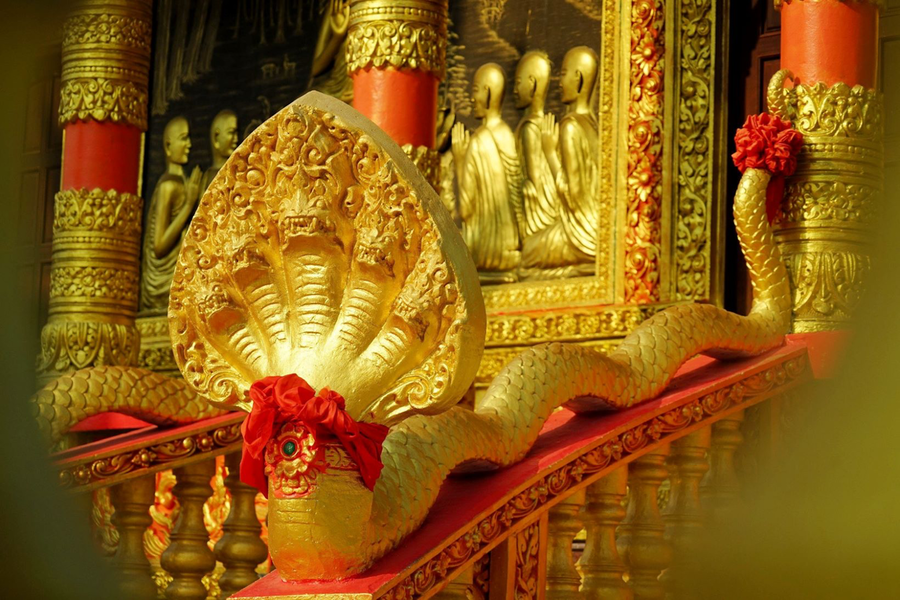
A clear distinction can be observed in a golden seven-headed Nāga, a serpent deity, positioned as a decorative guardian at the stairway of a Khmer Theravāda temple. This image is rare in mainstream Vietnamese Buddhism. Mainstream Vietnamese Buddhist temples, especially in the north and center, tend to focus on Bodhisattvas like Quan Âm (Avalokitesvara), ancestor veneration, and sometimes Confucian or Taoist integration.
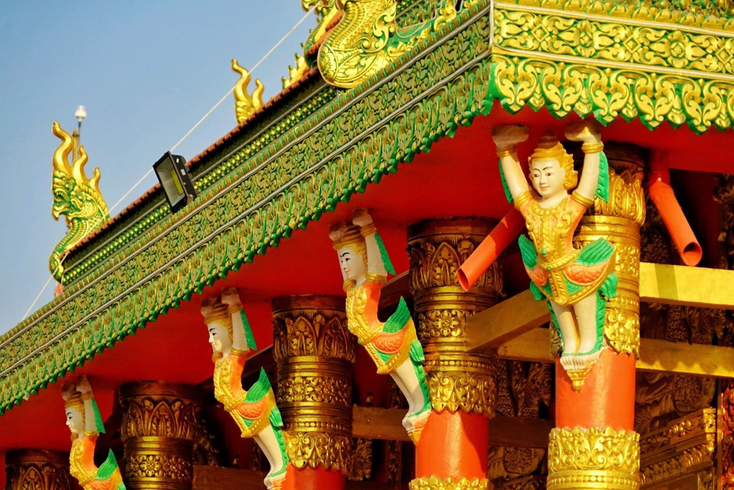
The becoming of Vietnam
Woven between modern Vietnam is a history of 54 ethnic groups. Among their heritage are
Cham rituals, the H’Mong’s embroidery, and the Khmer’s golden Nāga. These communities are not footnotes in Vietnamese history; they are foundational chapters whose future is in progress.
The significance of cultural heritage is not marked by a number representing the majority. To lose what the 13% of Vietnam represents is to put a permanent scar on history. After all, the becoming of Vietnam is the integration of 54 ethnicities.
We are greater than, and greater for, the sum of us.
― Heather McGhee.
Vợ chồng A Phủ (translation: Mị and A Phủ) tells the story of Mị, a Hmong woman trapped in an oppressive feudal system, who is sold into a forced marriage and endures years of suffering. Her eventual act of rebellion, freeing A Phủ, a fellow victim, marks the beginning of their journey toward freedom and resistance.
